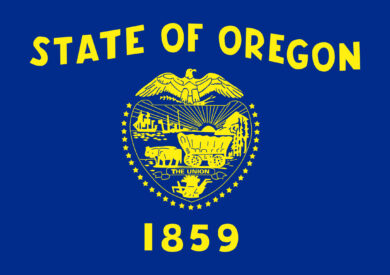
 Popular Cities For Lending in Oregon
Popular Cities For Lending in Oregon
In the Oregon real estate market, grabbing properties before your competition is essential for making the best deals. Although real estate investors sometimes go the traditional route and seek bank loans, the process is anything but speedy.
When time is of the essence, waiting for the lengthy process of getting approval is not an option for most investors. Oregon hard money lenders specialize in providing hard money loans which provide quick funds to investors. These loans are for a non owner occupied property or in some cases for business purpose loans.
Oregon Hard Money Lender FAQ’S
Below are some of the most frequently asked questions we get regarding hard money loans and lenders in Oregon.
What Do Oregon Hard Money Lenders Specialize in?
Oregon hard money lenders specialize in providing short-term, creative financing for real estate investors. If you seek a conventional lender to purchase an investment property, your loan request will be based on the property’s value and your assets. Your credit score, job, and finances will be scrutinized intensely. Hard money lenders base their final loan decisions on the after-repair value. The ARV represents the potential value of a property after all repairs have been accomplished.
What are the Benefits of Oregon Hard Money Loans?
Oregon hard money loans offer advantages that traditional banks cannot. Lenders like Acamnet Financial offer a higher level of flexibility than banks. When qualifying for this type of loan, lenders do not delve too deeply into the finances of real estate investors. In most cases, simply present the property and your plans, which saves you the hassle of gathering countless financial documents.
Do Oregon Hard Money Lenders Look at my Credit Score?
One of the greatest benefits of working with Oregon hard money lenders is the lack of credit score requirements. One of the first things a bank does is check your credit score. You can get approved for a hard money loan in Oregon even if you have bad credit or poor credit, bankruptcies, and foreclosures in the past. Oregon Hard money lenders primarily care about the property you are purchasing.
What is the Interest Rate & Points for Hard Money Loans in Oregon?
Interest rates for hard money loans in Oregon are typically higher than traditional bank loans (conventional loans) because of the greater risk lenders must take on when approving loans. When searching for a hard money lender near me in Oregon, you will find average interest rate is between 8%-15%. You should also be aware that lenders sometimes charge points that are meant to offset their administrative costs. Each point represents 1% of the total loan amount. The average points lenders charge is between 1 to 3. Some lenders may charge up to 10 points. These points are due upfront or at closing, depending on the lender.
What Should I Look for in an Oregon Hard Money Lender?
There are many benefits to working with an Oregon hard money lender. You just need to make sure you are working with the right lender. You can rely on Acamnet Financial Group when you need us most. We offer reliability, consistency, experience, and support. As a real estate investor, you know the importance of grabbing the best property deals when they become available.
How can Hard Money Lenders in Oregon Help Me?
Whether you are new to real estate and real estate projects or an old pro, you know having the capital to purchase real estate is essential. Without funds, you will miss out on real estate transactions. When you partner with hard money lenders in Oregon, you will quickly get the money you need without jumping through the hoops of traditional bank lenders.
How do I get a Hard Money Loan in Oregon?
When you want a hard money loan in Oregon, begin by preparing the property information. Location, size, purchase price, after repair value, repair costs, etc. In most cases, the financing will be based on these numbers. Then, apply for a hard money loan in Oregon using this information and supply some financial information. Then, an appraisal will be ordered to assess the loan-to-value ratio, which will influence the loan amount.
How do I Refinance an Oregon Hard Money Loan?
Refinance an Oregon hard money loan will involve moving from a high interest, short term loan to a longer term, usually lower interest rate loan. Typically a conventional type of loan. When refinancing an Oregon hard money loan you will find it will have a more stringent set of guidelines. You will need to have sufficient credit and income qualifications. As the lending landscaping and regulations constantly change, you want to consult a knowledgeable conventional loan expert.

Current Real Estate Trends In Oregon (2025)
The real estate market in Oregon is affected by a variety of components that direct patterns and progressions. This article gives an investigative and research-oriented synopsis of the latest real estate trends in Oregon.
Specifically, we will look at the forecasts for the housing market, the effect of inflation and interest rates, and the obstacles presented by supply chain issues and construction costs.
Utilizing an academic writing style that is objective and unbiased, this article intends to present a data-driven analysis of the current state of the real estate market in Oregon.
By studying these trends and elements, readers will gain a thorough comprehension of the main dynamics forming the real estate scene in the state.
Housing Market Predictions
Recent data and research on the housing market in Oregon reveals potential changes in the coming months. It appears that demand is high and supply is limited, leading to an expectation of a continued increase in housing prices. The state’s strong economy and population growth are likely to be major contributors to this trend.
However, there are worries about affordability and what effect interest rate hikes may have on the market. Monitoring these developments closely is important in the coming months.
Impact of Inflation and Interest Rates
Anxiety is growing among Oregon’s potential homebuyers and sellers, due to the effects of inflation and interest rates on the local property market.
A rise in inflation could result in increased interest rates, making mortgages more costly and potentially reducing demand for houses.
Additionally, higher interest rates might make borrowing more expensive for developers, thereby limiting the construction of new homes and possibly causing a shortage of properties.
All of these factors can lead to a decrease in the real estate market and have an influence on property prices in Oregon.
Supply Chain Issues and Construction Costs
The Oregon real estate market is facing a serious affordability crisis due to disruptions in supply chains and rising construction costs. These issues have caused delays and shortages of building materials, resulting in a sharp increase in the price of lumber.
According to the National Association of Home Builders, the cost of lumber has skyrocketed over 300% since April 2020. This increase could be passed on to homebuyers, making it even harder to access housing.
The situation is dire and action must be taken to ensure that Oregonians can afford to buy homes.
Sources
https://www.noradarealestate.com/blog/oregon-housing-market/
https://www.houzeo.com/blog/oregon-real-estate-market/
https://oregonbusiness.com/19745-5-predictions-for-oregon-s-housing-market/

All About Oregon
Oregon, located in the Pacific Northwest region of the United States, is a state with a diverse geography and a rich indigenous history. Bordered by the Columbia River, the Snake River, the 42° north parallel, and the Pacific Ocean, Oregon offers a variety of landscapes and natural wonders.
With a population of approximately 4.2 million people, the state’s economy has traditionally relied on industries such as agriculture, fishing, logging, and hydroelectric power. However, Oregon has also emerged as a hub for technology and is home to major companies like Nike.
The state boasts notable landmarks such as Mount Hood, the highest point in Oregon, and Crater Lake National Park, which houses the deepest lake in the United States.
Oregon’s history encompasses the establishment of Fort Astoria, the implementation of the Black Exclusion Law, debates surrounding statehood and slavery, and the expansion of railroads post-Reconstruction.
Geography
Oregon’s geographical diversity is a defining feature of the state. A combination of volcanoes, bodies of water, forests, and high deserts characterizes it.
Mount Hood, the highest point in Oregon, towers at 11,249 feet. Crater Lake National Park is home to the deepest lake in the United States.
The Pacific Ocean forms the state’s western boundary, providing stunning coastal landscapes.
Additionally, Oregon is traversed by the Cascade Range, which includes several active volcanoes such as Mount Hood, Mount Jefferson, and Mount Bachelor.
The diverse geography of Oregon offers a plethora of recreational opportunities, including hiking, skiing, fishing, and boating.
This rich natural environment has played a significant role in shaping the history and culture of the indigenous peoples who have inhabited the region for thousands of years.
Indigenous History
The indigenous history of the region now known as Oregon spans thousands of years, with evidence of human habitation dating back at least 15,000 years. The land was home to numerous indigenous nations, including the Chinook, Nez Perce, and many others.
These native peoples developed unique cultures and societies, adapting to the diverse environments of Oregon’s forests, mountains, rivers, and coastlines. They relied on hunting, fishing, gathering, and agriculture for sustenance and established complex trading networks and social structures.
European traders and explorers began interacting with these indigenous communities in the 16th century, leading to significant cultural changes and conflicts. This period of indigenous history laid the foundation for Oregon’s subsequent colonization and statehood.
Statehood
Statehood in Oregon was achieved on February 14, 1859, after the resolution of debates surrounding its admission as a free or enslaved person state. Oregon’s request for statehood was delayed as there were disagreements on whether it should be a free or slave state. Eventually, Oregon was admitted as a free state.
It is important to note that the original state Constitution of Oregon had a whites-only clause, reflecting the racial attitudes of the time.
With statehood, Oregon could establish its autonomous government and make decisions regarding its internal affairs. This marked an important milestone in the development and governance of the state.
Statehood set the stage for Oregon’s growth and development, including its population expansion, which will be discussed in the subsequent section.
Population
With the achievement of statehood, Oregon embarked on a path of growth and development, attracting a diverse population to its varied landscapes and abundant resources.
Oregon’s current population stands at approximately 4.2 million people, making it the 27th most populous state in the U.S.
The capital city, Salem, has a population of 177,723, while the largest city, Portland, is home to 652,503 residents. The Portland metropolitan area, which includes surrounding towns and suburbs, has a population of 2,512,859.
The state’s population has seen steady growth over the years, driven by factors such as job opportunities, natural beauty, and high quality of life.
This diverse population is drawn to Oregon’s geographic diversity, which includes volcanoes, bodies of water, forests, and high deserts, as we will explore in the next section.
Geographic Diversity
Oregon’s geographic diversity is a notable aspect of the state, showcasing a range of natural features and landscapes. From its volcanic peaks to its pristine bodies of water, Oregon offers a variety of stunning vistas.
Mount Hood, standing at 11,249 feet, is the highest point in the state and attracts outdoor enthusiasts year-round.
Crater Lake National Park is home to the deepest lake in the United States, formed by the collapse of Mount Mazama thousands of years ago.
The state is also characterized by its lush forests, such as the Malheur National Forest, which houses the largest organism in the world, the Armillaria ostoyae fungus.
Additionally, Oregon’s diverse geography includes high deserts, such as the Alvord Desert, which offer a unique and contrasting landscape to explore.


 Popular Cities For Lending in Oregon
Popular Cities For Lending in Oregon